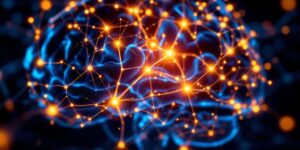
In today’s world, artificial intelligence (AI) is changing how we train and improve performance in various fields, including sports and workplaces. While AI offers many benefits, the role of human trainers remains crucial. They bring a personal touch, ensuring that training is tailored to individual needs and ethical standards are upheld. This article explores how human trainers enhance performance in the age of AI, emphasizing their importance in both athletic and workplace environments.
Key Takeaways
- Human trainers provide a personal connection that AI cannot replace.
- They create customized training plans based on individual needs.
- Trainers help maintain ethical practices when using AI technology.
- Real-time feedback from trainers boosts motivation and trust.
- The collaboration between human trainers and AI leads to better performance outcomes.
The Role of Human Trainers in the Age of AI
Bridging the Gap Between Technology and Human Touch
In a world increasingly driven by technology, human trainers play a crucial role in connecting the digital and personal aspects of training. They ensure that technology complements rather than replaces the human element. This connection is vital for fostering relationships and understanding individual needs.
Ensuring Personalized Training Programs
Human trainers are essential for creating tailored training programs. They consider various factors, such as:
- Individual goals
- Learning styles
- Physical and mental health
This personalized approach helps maximize the effectiveness of training, making it more relevant and engaging for each person.
Maintaining Ethical Standards in AI Integration
As AI becomes more integrated into training, human trainers must uphold ethical standards. This includes:
- Protecting personal data
- Ensuring fairness in training opportunities
- Promoting transparency in AI usage
Human trainers are not just instructors; they are advocates for their trainees, ensuring that technology serves to enhance, not hinder, personal growth.
Enhancing Athlete Performance with Human Trainers
Combining AI Insights with Human Expertise
In today’s sports world, the blend of AI technology and human trainers is key to boosting athlete performance. While AI can analyze data quickly, human trainers bring intuition and experience to the table. They can interpret AI findings and apply them in ways that machines cannot. This partnership helps athletes improve their skills more effectively.
Real-Time Feedback and Adjustments
Human trainers play a crucial role in providing immediate feedback during training sessions. Here are some ways they enhance performance:
- Instant corrections: Trainers can spot mistakes in real-time and guide athletes on how to fix them.
- Motivation: Trainers encourage athletes to push their limits, helping them stay focused and driven.
- Personalized strategies: They can adjust training plans based on an athlete’s unique needs and responses to AI data.
Building Trust and Motivation
A strong relationship between trainers and athletes is vital for success. Here’s how trainers build trust and motivation:
- Open communication: Trainers listen to athletes’ concerns and feedback, creating a supportive environment.
- Setting goals together: Collaborating on goals helps athletes feel more invested in their training.
- Celebrating achievements: Recognizing progress, no matter how small, boosts athletes’ confidence and motivation.
In the age of AI, the human touch remains irreplaceable. Trainers not only guide athletes physically but also support them emotionally, ensuring a well-rounded approach to performance enhancement.
Human Trainers and AI in Workplace Training

Adapting to Rapid Technological Changes
In today’s fast-paced work environment, human trainers play a crucial role in helping employees adapt to new technologies. They ensure that training programs are relevant and up-to-date. Here are some key ways trainers help:
- Assessing the latest technology trends.
- Designing training that meets current needs.
- Providing ongoing support as technology evolves.
Facilitating Effective Training Transfer
Human trainers are essential for making sure that what employees learn is applied in their jobs. They do this by:
- Creating real-world scenarios during training.
- Encouraging practice and feedback.
- Following up to see how skills are used on the job.
Creating Dynamic Work Environments
A positive work environment is vital for learning. Human trainers help create this by:
- Promoting teamwork and collaboration.
- Encouraging open communication.
- Supporting a culture of continuous learning.
In a world where technology is always changing, the human touch in training is more important than ever. Trainers not only teach skills but also inspire confidence and growth.
Challenges Faced by Human Trainers in the AI Era
In the age of AI, human trainers encounter several significant challenges that can impact their effectiveness. These challenges require careful navigation to ensure successful training outcomes.
Addressing Privacy and Data Protection Concerns
- Trainers must ensure that personal data is handled securely.
- Compliance with regulations regarding data privacy is essential.
- Athletes and employees should have control over their own data.
Overcoming Technical Limitations
- Not all trainers are tech-savvy, which can hinder the use of AI tools.
- Access to advanced technology may be limited in some environments.
- Continuous training on new technologies is necessary for trainers.
Ensuring Fairness and Bias Mitigation
- AI systems can sometimes reflect biases present in their training data.
- Trainers need to be aware of these biases to avoid unfair assessments.
- Regular audits of AI tools can help maintain fairness in training.
In a world where humans change their own behavior when training AI, it’s crucial for trainers to adapt and evolve alongside technology.
By addressing these challenges, human trainers can better integrate AI into their training programs, ensuring a more effective and ethical approach to performance enhancement.
Future Trends in Human-AI Collaboration
AI-Powered Wearables and Real-Time Feedback
The future of training will see AI-powered wearables that provide instant feedback to users. These devices will help track performance metrics, allowing trainers to make quick adjustments. This technology will enable:
- Continuous monitoring of physical activity.
- Immediate insights into performance.
- Enhanced communication between trainers and athletes.
Virtual and Augmented Reality in Training
Virtual and augmented reality (VR and AR) will transform how training is conducted. These technologies will create immersive environments for learners, making training more engaging. Key benefits include:
- Simulated real-world scenarios for practice.
- Safe environments for skill development.
- Increased retention of information through interactive experiences.
Predictive Analytics for Performance Enhancement
Predictive analytics will play a crucial role in identifying potential performance issues before they arise. By analyzing data trends, trainers can:
- Anticipate injuries based on performance patterns.
- Tailor training programs to individual needs.
- Optimize recovery strategies for athletes.
As we move forward, smart environments will become more interconnected and efficient, thanks to AI’s ability to optimize energy use, improve safety, and enhance overall performance. This integration will not only benefit athletes but also create a more effective training landscape for everyone involved.
Human Trainers in Sports Education

Analyzing Performance with AI Tools
In sports education, human trainers play a vital role in analyzing performance using advanced AI tools. These tools help trainers understand athletes’ strengths and weaknesses better than ever before. By combining their expertise with AI insights, trainers can provide more effective coaching.
Personalized Training Programs for Athletes
Creating personalized training programs is essential for athlete development. Here are some key points:
- Individual Assessment: Trainers assess each athlete’s unique skills and needs.
- Data-Driven Adjustments: AI tools provide data that helps trainers adjust programs based on performance.
- Continuous Monitoring: Regular check-ins ensure that training remains effective and relevant.
Identifying and Nurturing Talent
Human trainers are crucial in spotting and developing talent. They can:
- Use AI to analyze performance data and identify potential.
- Provide mentorship and support to help athletes grow.
- Create a positive environment that encourages athletes to excel.
The combination of human insight and AI technology allows trainers to unlock the full potential of athletes, guiding them toward success in their sports careers.
In summary, human trainers in sports education leverage AI tools to enhance performance analysis, create personalized training programs, and nurture talent effectively. Their role is essential in ensuring that athletes reach their highest potential.
Ethical Considerations for Human Trainers Using AI
Ensuring Data Privacy and Security
In the age of AI, trainers must prioritize the privacy of athletes’ data. Protecting personal information is crucial to maintain trust. Here are some key points to consider:
- Always obtain consent before collecting data.
- Use secure systems to store and manage data.
- Regularly review data handling practices to ensure compliance with laws.
Maintaining Fairness and Avoiding Bias
AI systems can sometimes reflect biases present in their training data. To combat this, trainers should:
- Ensure diverse data sets are used for training AI models.
- Regularly audit AI outputs for fairness.
- Educate themselves on potential biases in AI tools.
Promoting Transparency and Accountability
Transparency in how AI is used in training is essential. Trainers should:
- Clearly communicate how AI tools will be used to athletes.
- Be accountable for the decisions made based on AI insights.
- Encourage open discussions about the implications of AI in training.
In a world where technology is rapidly evolving, it is vital for human trainers to navigate the ethical landscape carefully. By prioritizing privacy, fairness, and transparency, trainers can harness the power of AI while safeguarding the interests of those they train.
Conclusion
In summary, human trainers play a vital role in helping athletes reach their best in a world where AI is becoming more common. While AI can analyze data and suggest improvements, it lacks the personal touch and understanding that real trainers provide. Trainers motivate athletes, offer support, and create plans that fit each person’s needs. They help athletes not just with physical skills but also with mental strength. As technology continues to grow, the partnership between human trainers and AI will be key to unlocking the full potential of athletes. Together, they can create a brighter future for sports and fitness.
Frequently Asked Questions
What is the role of human trainers in the age of AI?
Human trainers help connect technology with personal attention. They make sure training is tailored to each person’s needs and maintain ethical standards when using AI.
How do human trainers enhance athlete performance?
They combine insights from AI with their own expertise. This allows them to give real-time feedback and build trust and motivation with athletes.
What challenges do trainers face with AI in workplace training?
Trainers must keep up with fast changes in technology, ensure effective learning transfer, and create flexible work environments.
How can AI and human trainers work together in sports education?
AI can analyze performance data, while trainers use that information to create personalized training programs and identify talent.
What ethical issues should trainers consider when using AI?
Trainers need to protect data privacy, ensure fairness, and be transparent about how AI is used in training.
What future trends can we expect in human-AI collaboration?
We can look forward to AI-powered wearables, virtual reality training, and predictive analytics that help enhance performance.


